First, in regard to how we CALL these pattern sides, they are NAMED routes that fit into the backside of the numbered frontside pattern. For those who are unfamiliar with our play calling system.....go buy the book. Just kidding. Below, you can see a diagram giving a brief explanation:
As a result, the QB's decision is simple and decisive: if the safety is inside the hash, he can count on single high principles to the tagged quick route; if he is on or outside the hash, he works the "220" pattern. The accountability falls to the coach to carefully plan boundary and field formational looks, but the work for the QB is clearly defined with an Advantage Principle that not only facilitates the quick game, but this offense's version of the Run N Shoot "Choice" route as well.
This represents the most basic presentation for quick routes. Hope this helps!

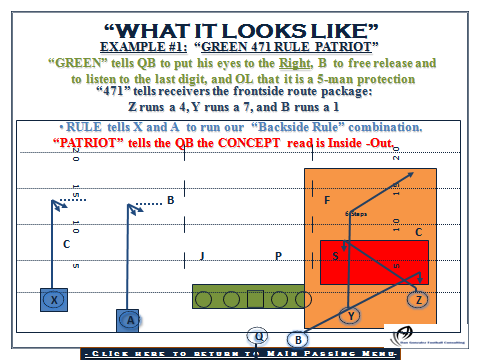
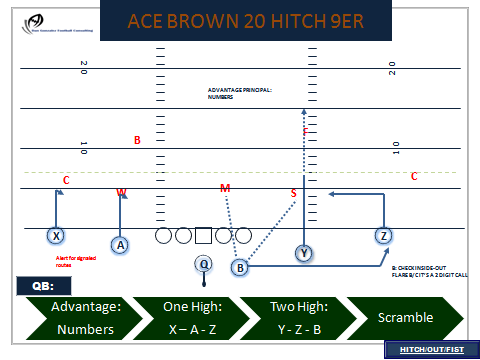
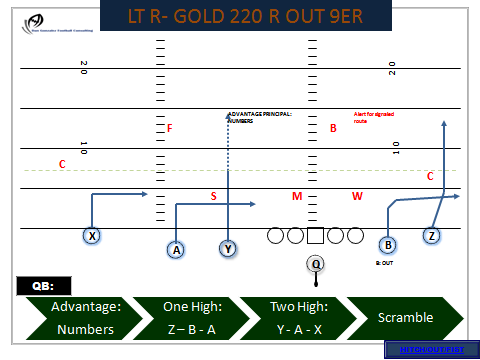
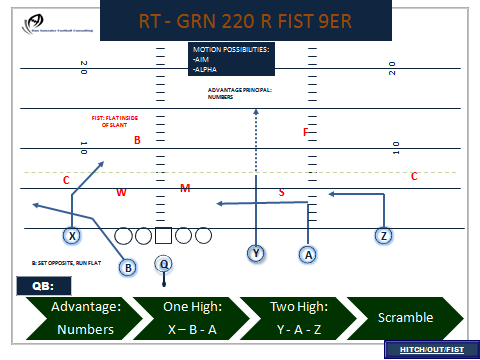
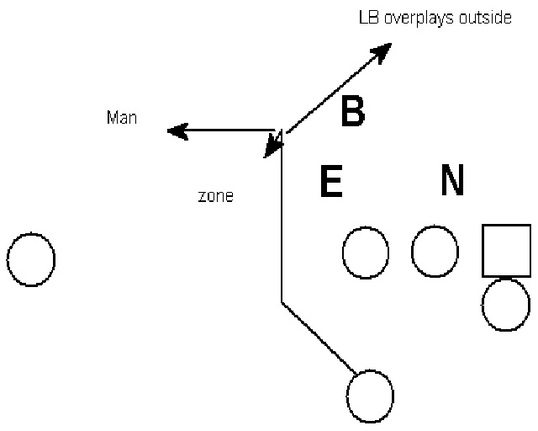
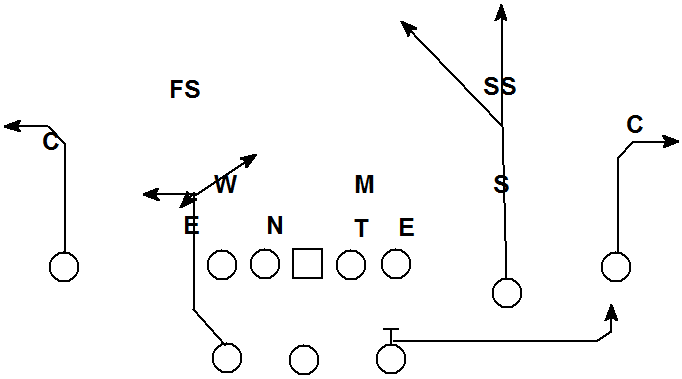
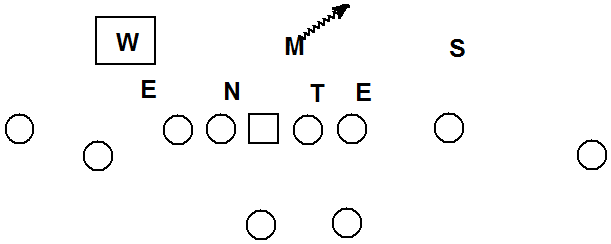
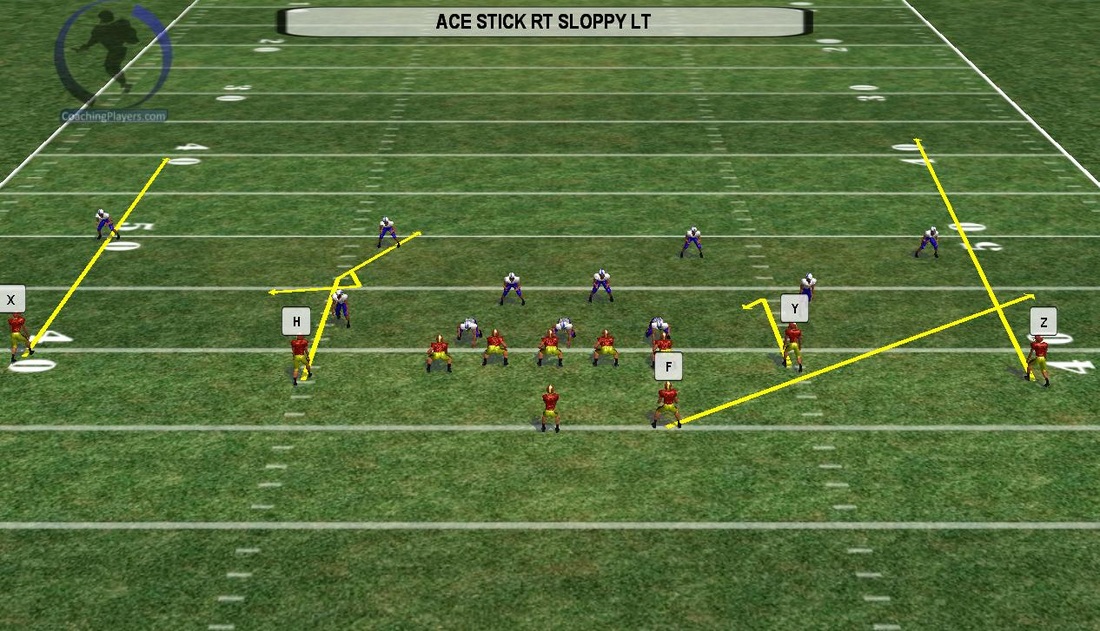
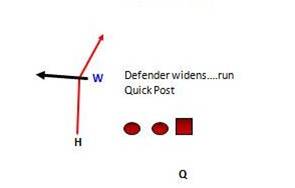
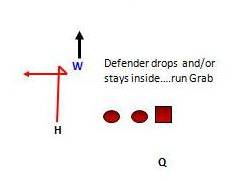
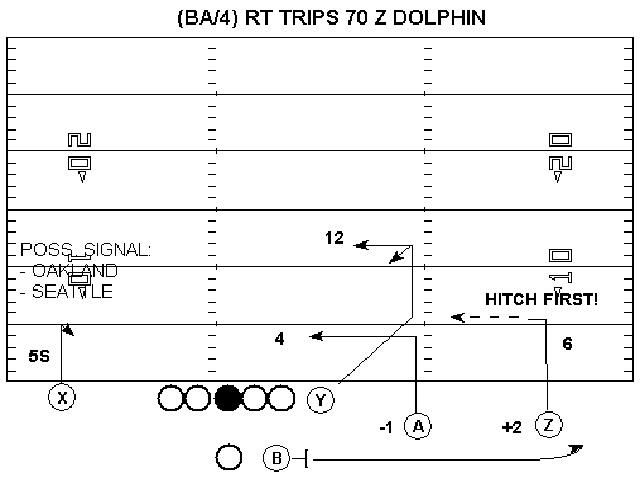
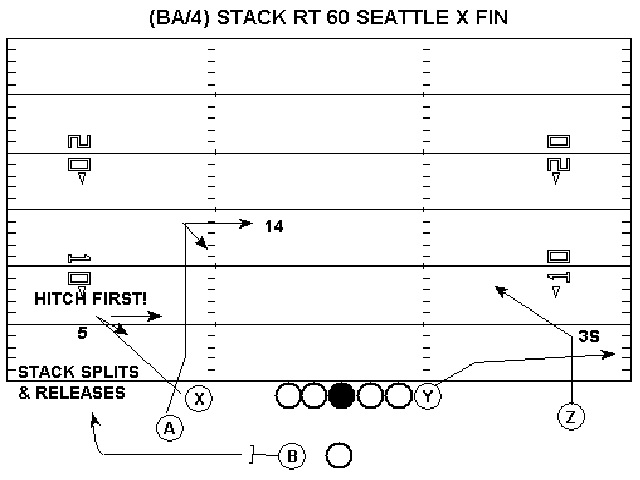
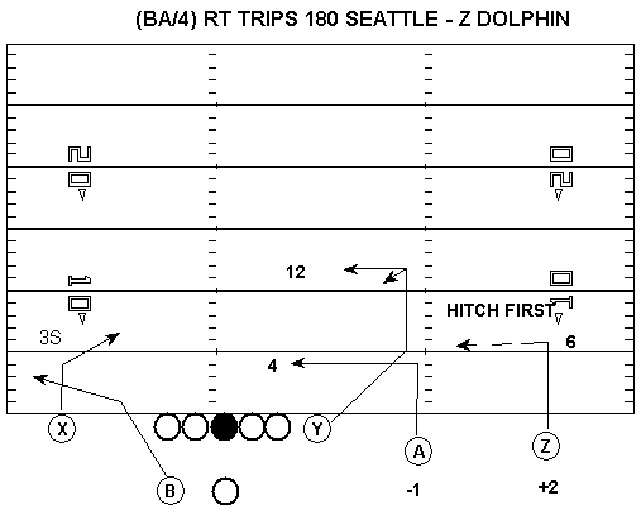
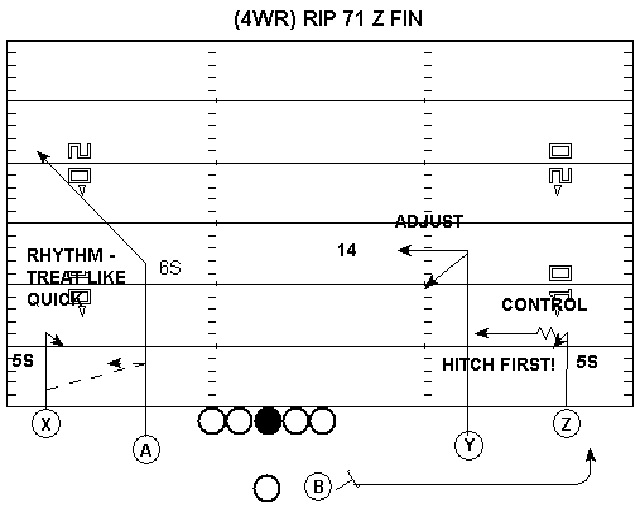
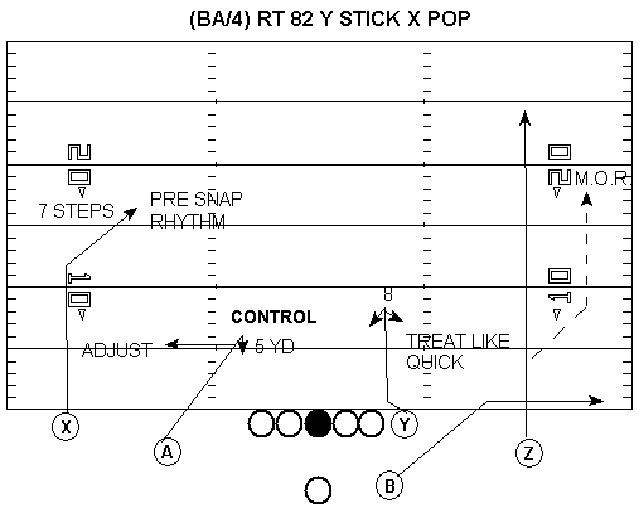
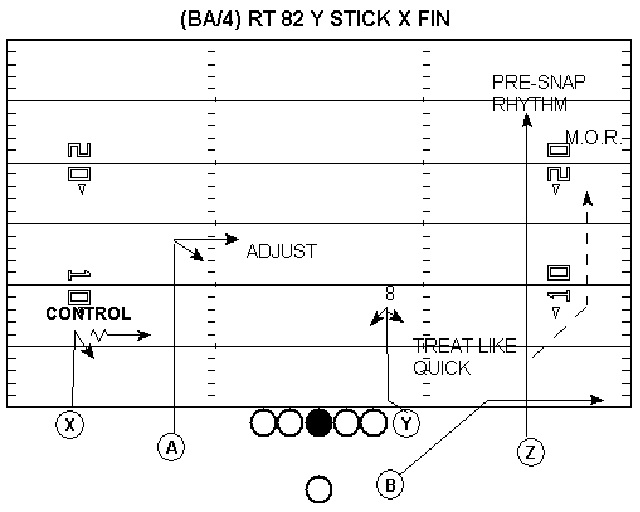
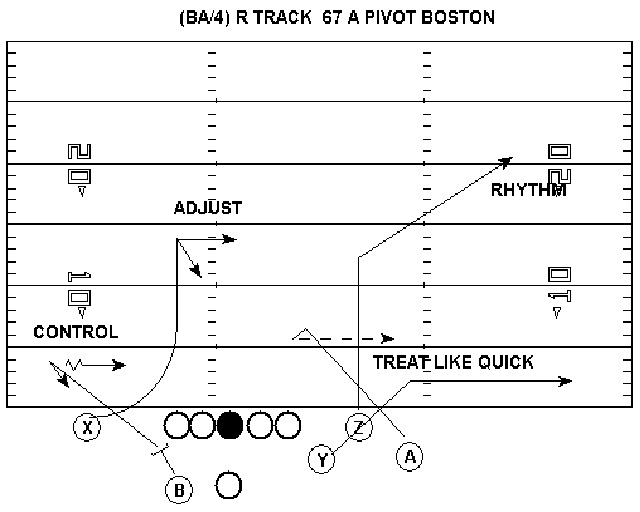
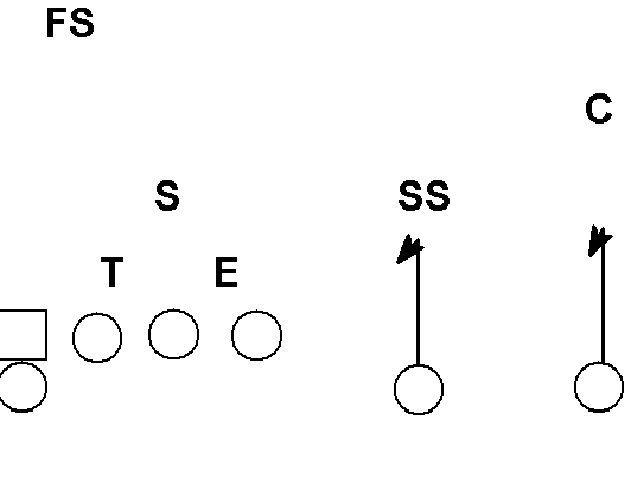
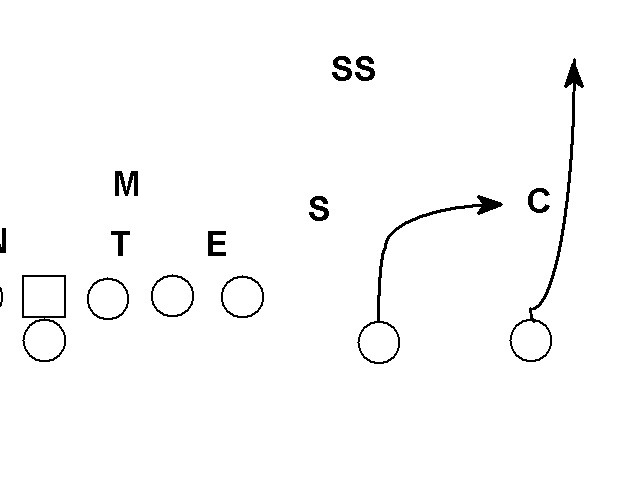
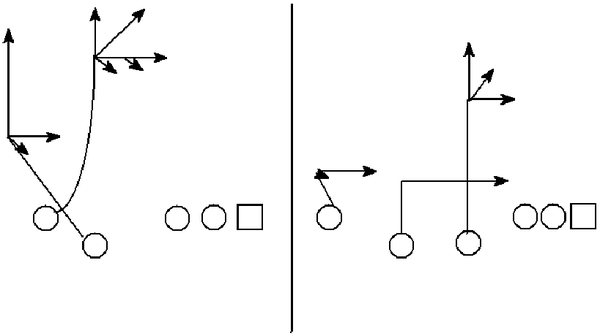
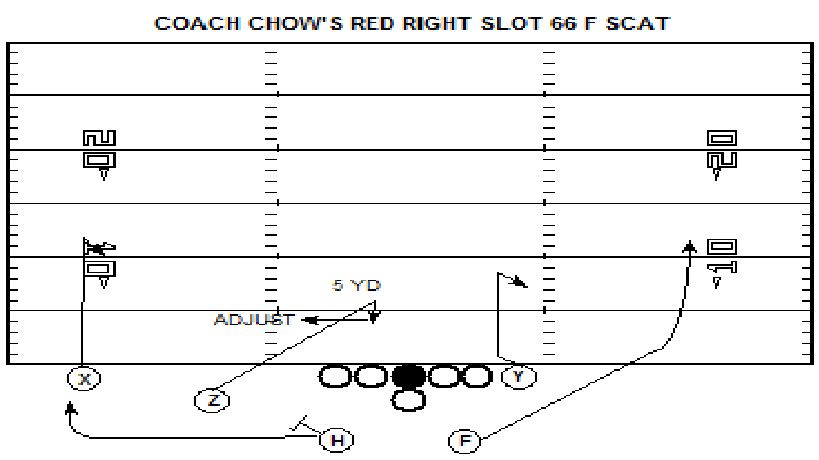
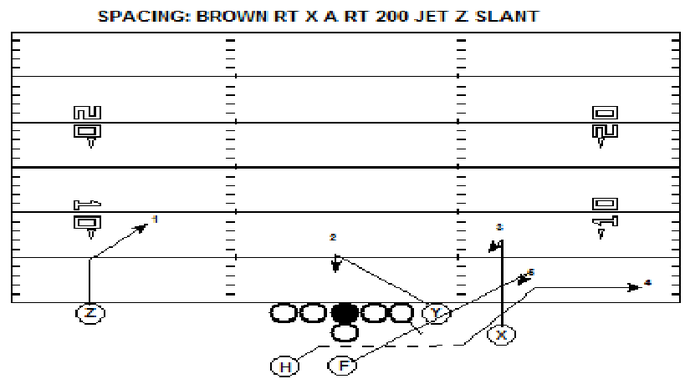

 RSS Feed
RSS Feed
